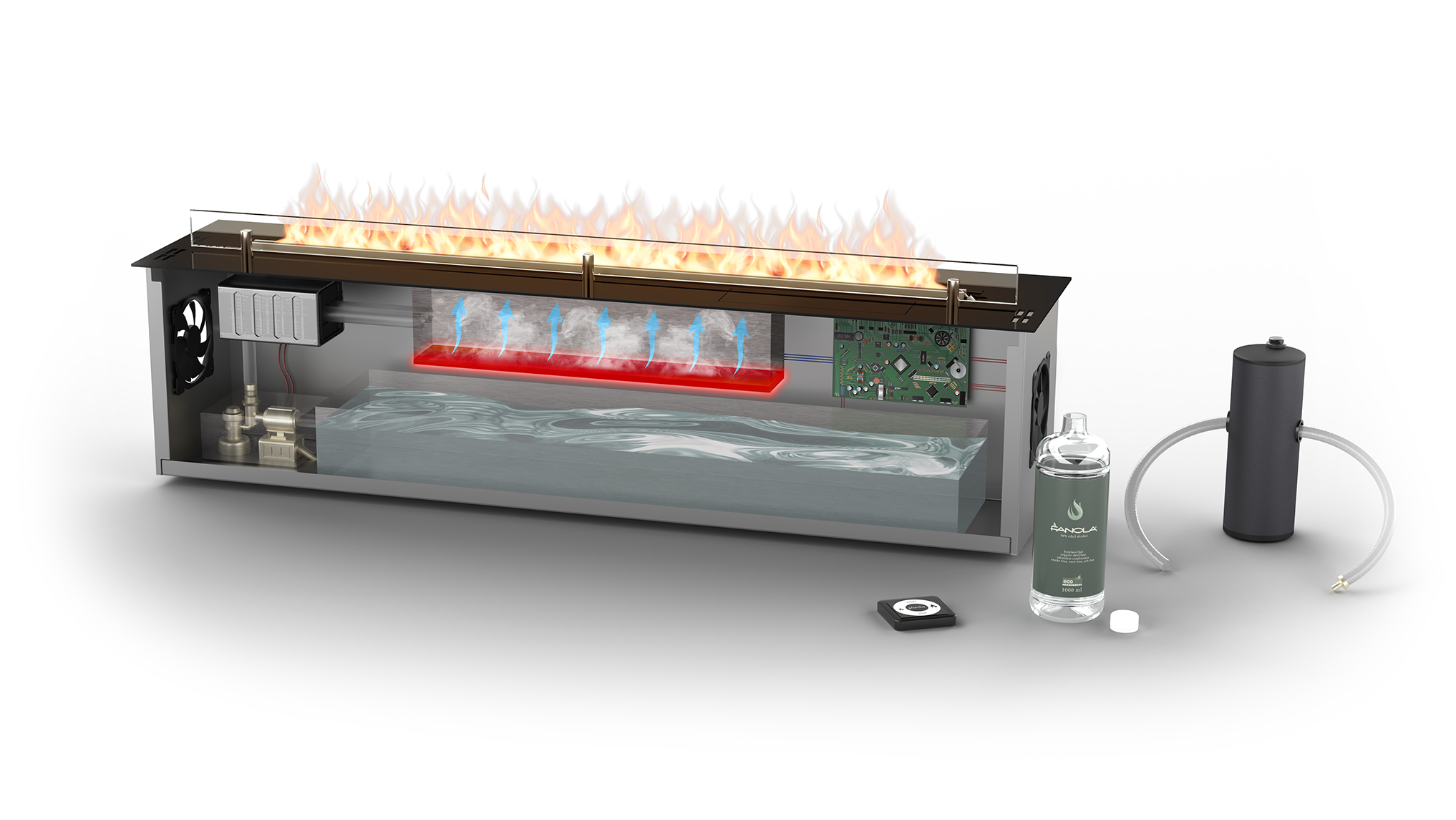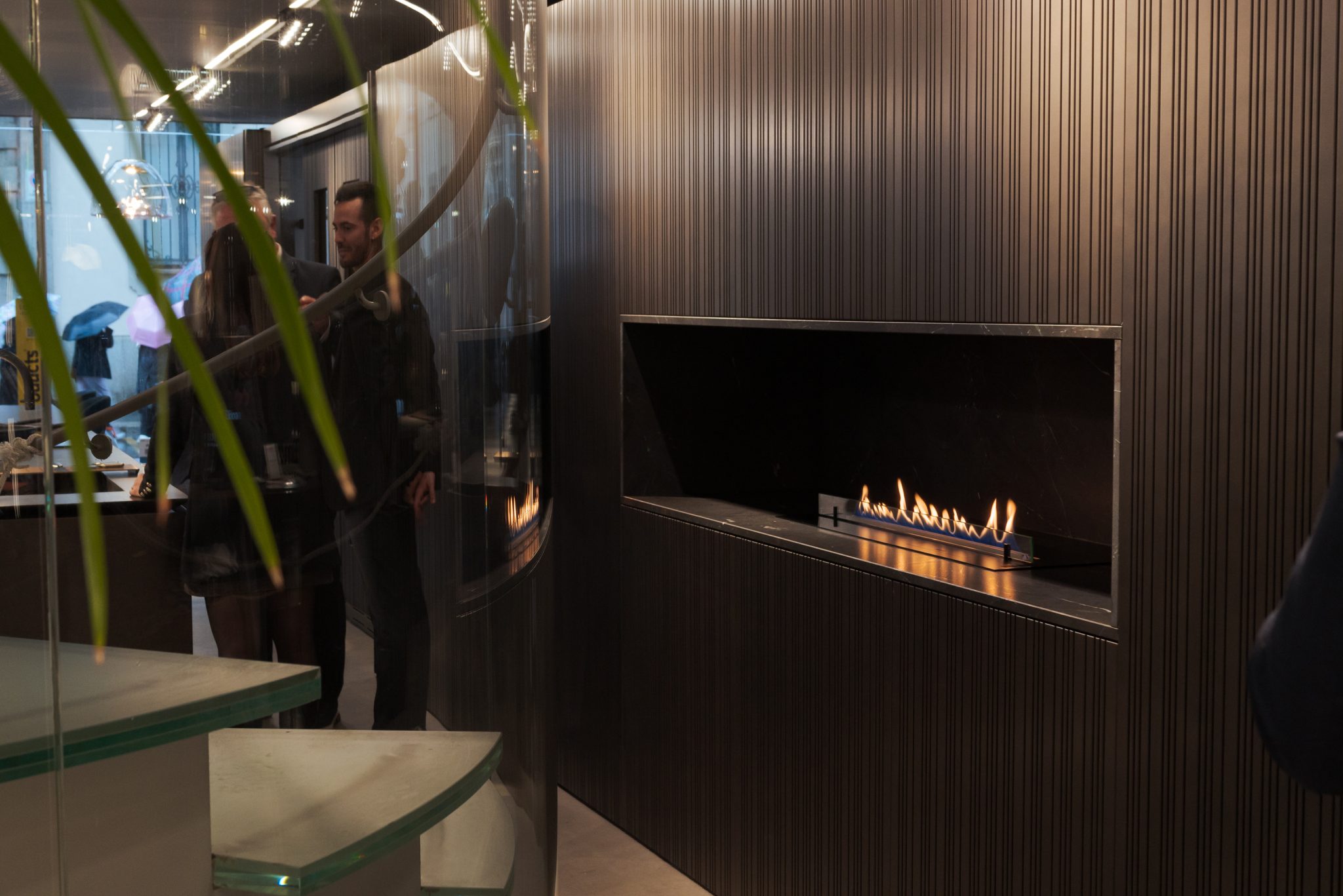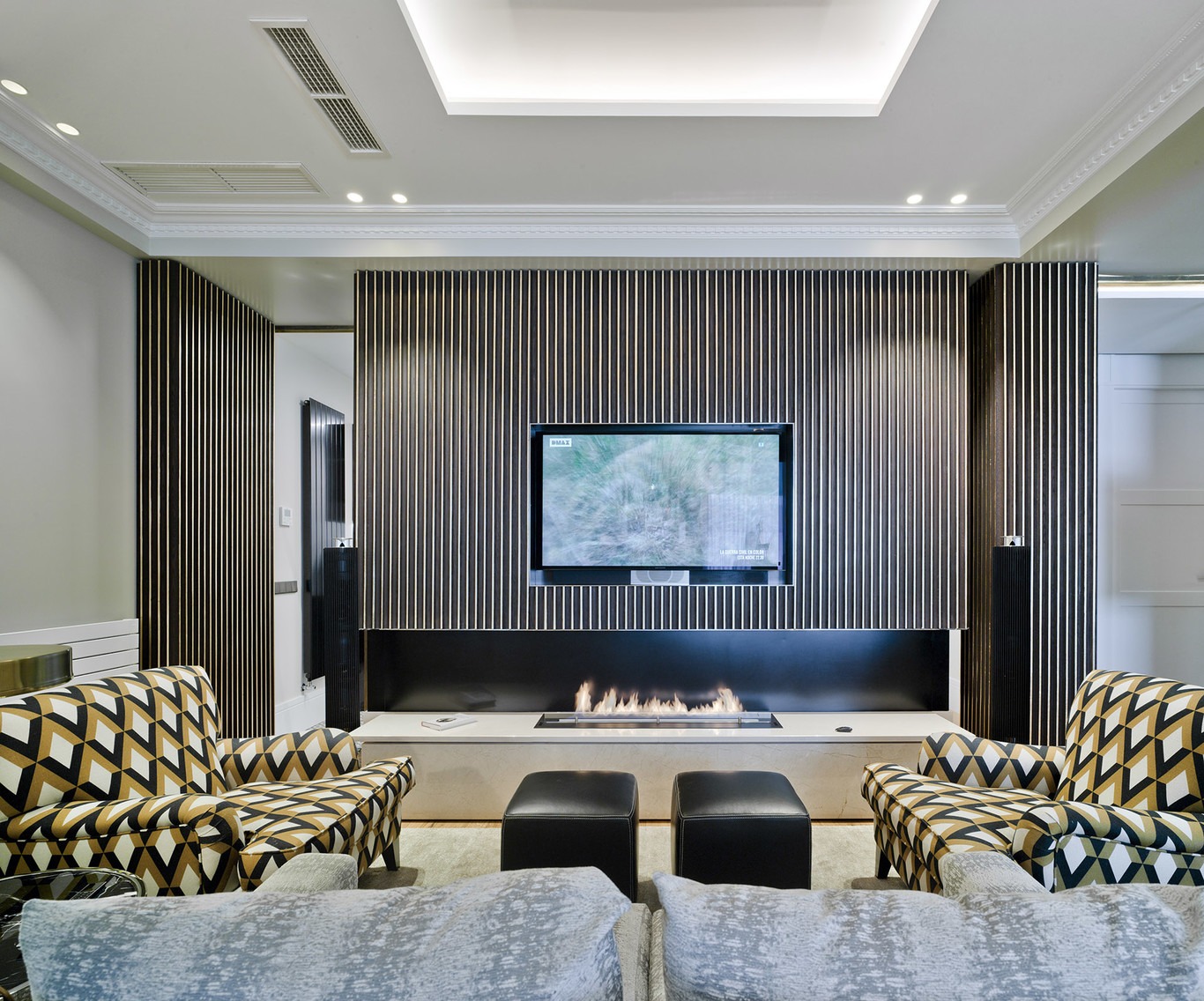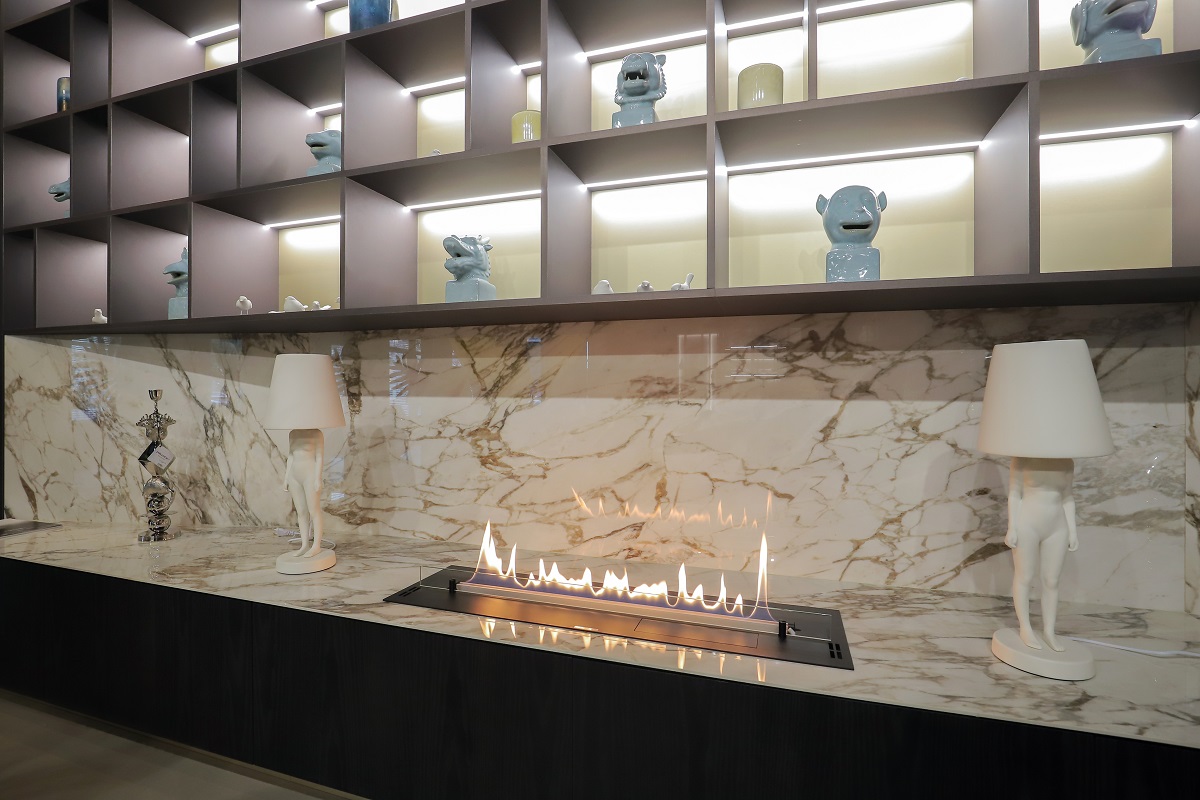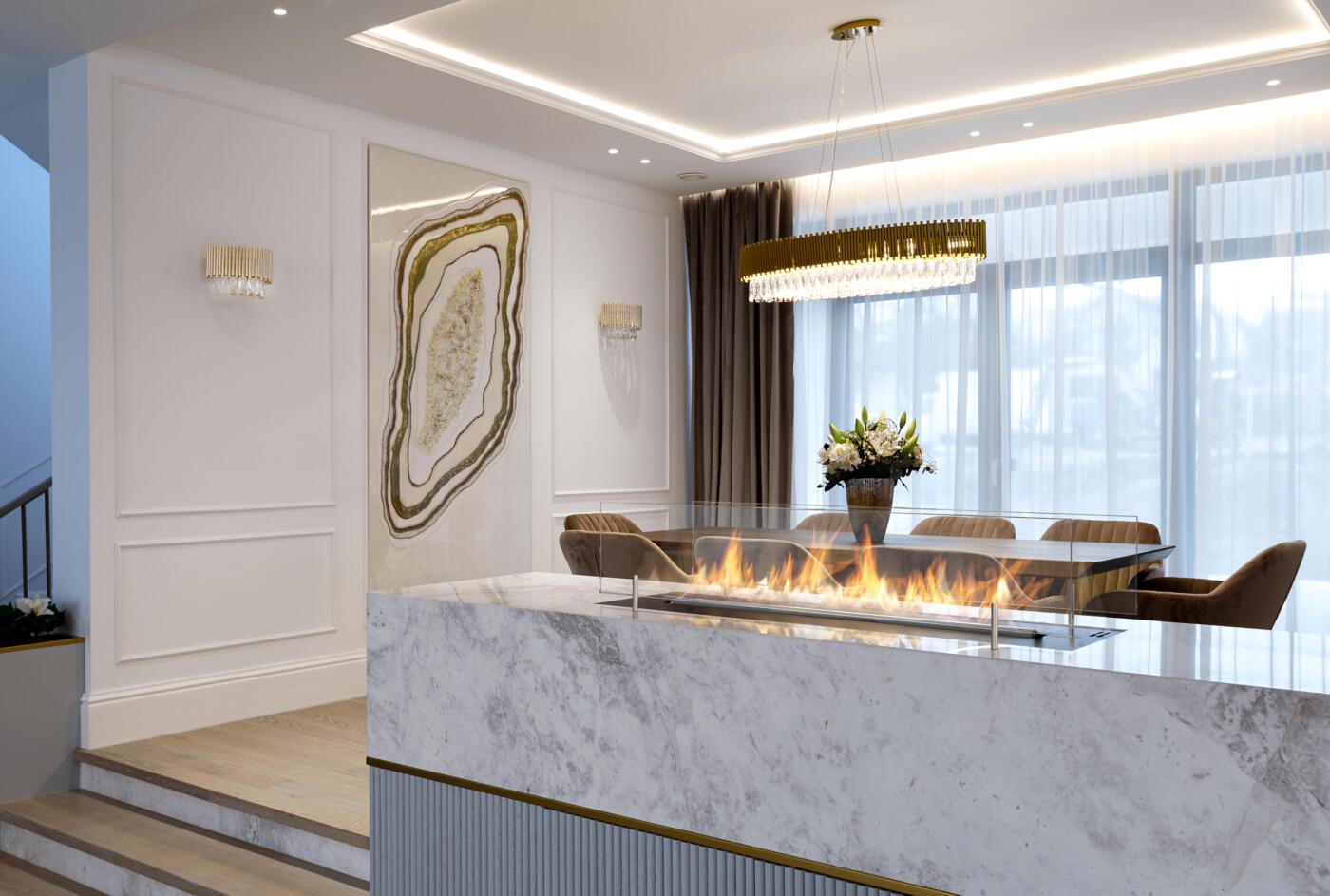
Do ethanol fireplaces provide heat?
Ethanol fireplaces, especially those with BEV (Burning Ethanol Vapours) technology, can raise room temperatures even though they are not primarily designed as heating solutions. Planika’s automatic ethanol fireplaces use BEV technology to generate heat through the combustion of pure bioethanol vapour. This process produces water vapour, a small amount of carbon dioxide, fire, and heat. The innovative BEV technology has revolutionized fireplace design, making these flueless devices popular among interior designers, architects, and DIY remodelers due to their limitless design possibilities.
Factors Influencing Heat Output in BEV Fireplaces
Three main factors influence the heat output of BEV fireplaces:
- Model Type (Burner Type): Different models have varied burner designs, which affect heat efficiency.
- Fire Line Length: Longer fire lines generally produce more heat.
- Flame Level: Adjustable flame levels allow control over the amount of heat produced.
Heat Output of Planika Ethanol Fireplaces
Planika offers various models with different heat outputs:
- Freestanding Fireplaces: These units produce between 2.5 kW and 7 kW of heat. They are versatile, requiring no installation, and can be relocated easily.
- Fireplace Inserts: These inserts, using patented BEV technology, can be larger than manual bio fireplaces. Their burners can reach lengths of up to 2.5 meters. The heat output ranges from 2.5 kW to 22 kW for the largest model, the FLA4 2490.
- You can adjust the heat output using a mobile app or remote control, which allows you to modify the flame height and consequently the heat emission and fuel consumption.
Comparing Heat Outputs: Ethanol vs. Wood-Burning Fireplaces
Comparing BEV fireplaces to traditional wood-burning and gas fireplaces reveals the following:
- Wood-Burning Fireplaces: Emit between 12 and 20 kW of heat.
- Gas Fireplaces: Produce between 8 and 14 kW of heat.
- Planika FLA4 (1.2 meter-long burner): Generates 9.4 kW of heat.
- Scandi Ethanol Fireplace: Produces 4.1 kW of heat.
Wood-burning stoves commonly produce 7 to 10 kW of heat. BEV fireplaces, with their 100% thermal efficiency, lack a chimney through which heat can escape. In contrast, modern wood-burning fireplaces have a thermal efficiency of about 70-80%.
Can BEV Ethanol Fireplaces Warm Up a Room?
BEV fireplaces can serve as supplementary heat sources, effectively raising room temperatures. Their ability to heat a room depends on:
- Room Size
- Burner Size
Other factors, such as the number of people and operating electronic devices, can also influence room temperature.
Heat Efficiency Tests
Test 1 – FLA4 990: In a 50 m² dining room initially at 21.9°C, a FLA3 990 fireplace (7 kW) raised the temperature by 4.6°C to 26.5°C within 60 minutes at flame level 4.
Test 2 – BUBBLE WALL&FLOOR: In another test, a free-standing Bubble fireplace (2.5 kW) increased the room temperature from 21.2°C to 23.2°C in just over an hour.
These tests demonstrate that ethanol fireplaces can effectively raise room temperatures by a few degrees, confirming their capability as supplementary heat sources.
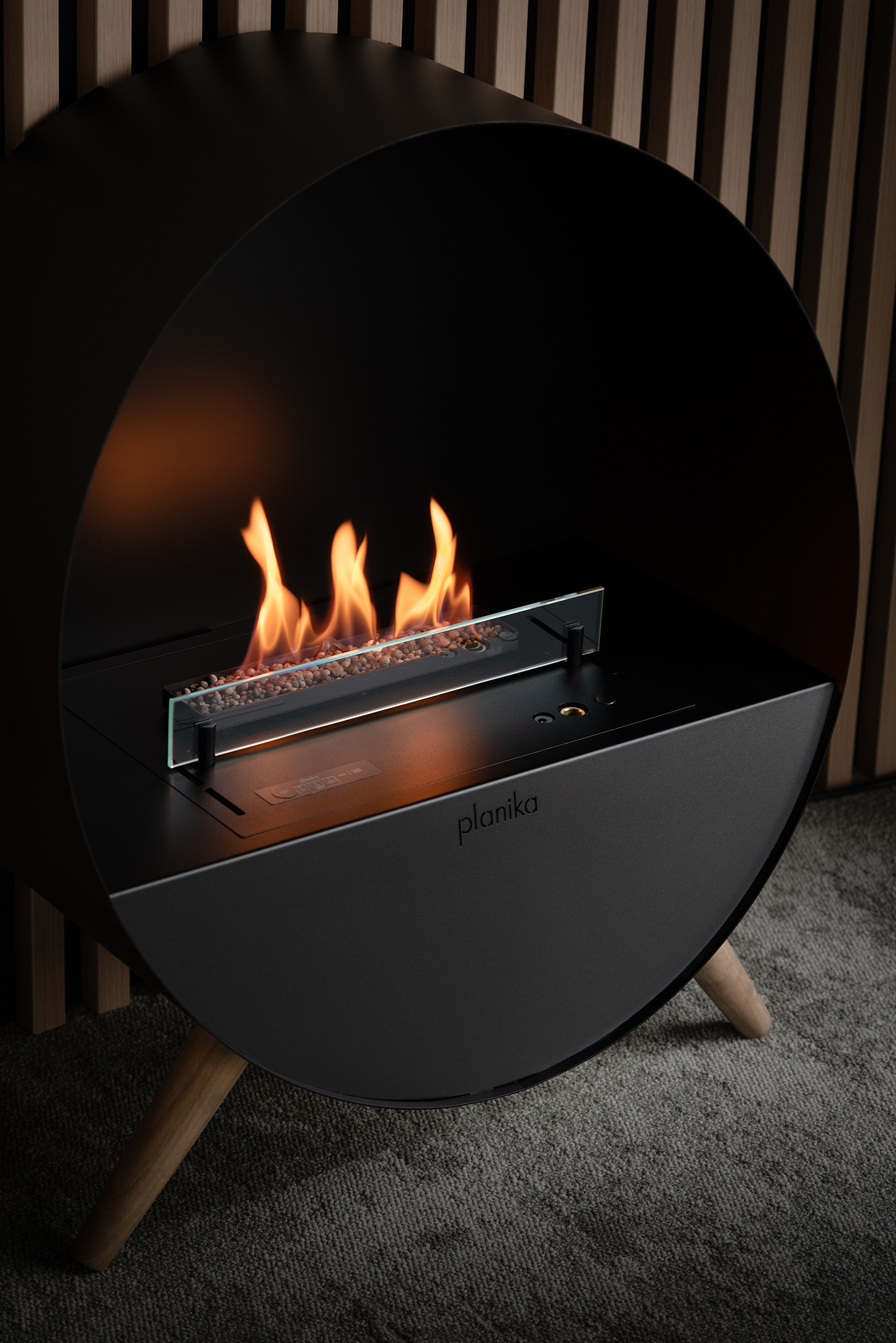 Conclusion
Conclusion
Ethanol fireplaces, especially those equipped with BEV technology, offer an efficient and aesthetically pleasing way to add heat to a room. While not intended to replace primary heating systems, they provide a flexible and stylish solution to enhance room temperature, catering to modern interior design needs.




